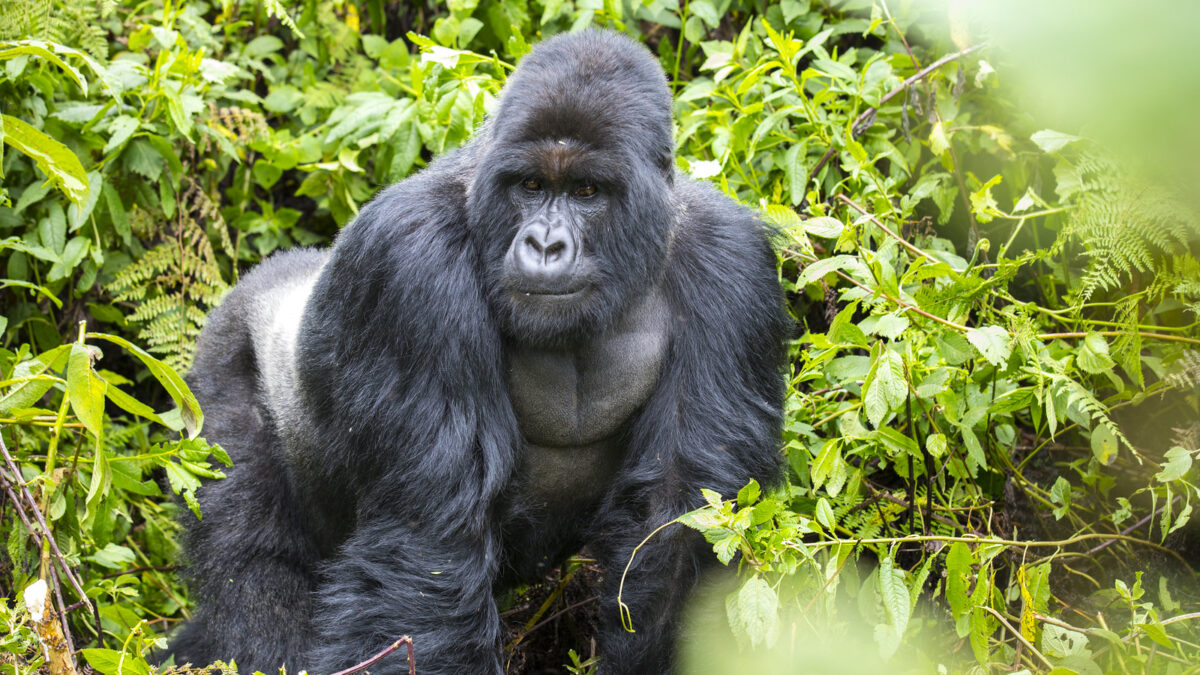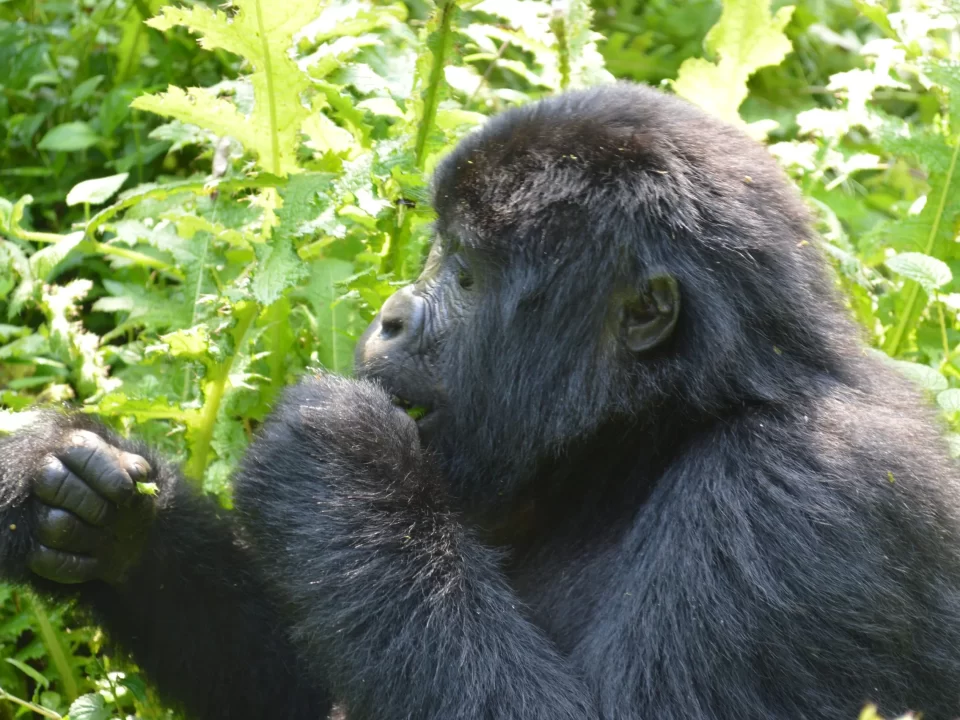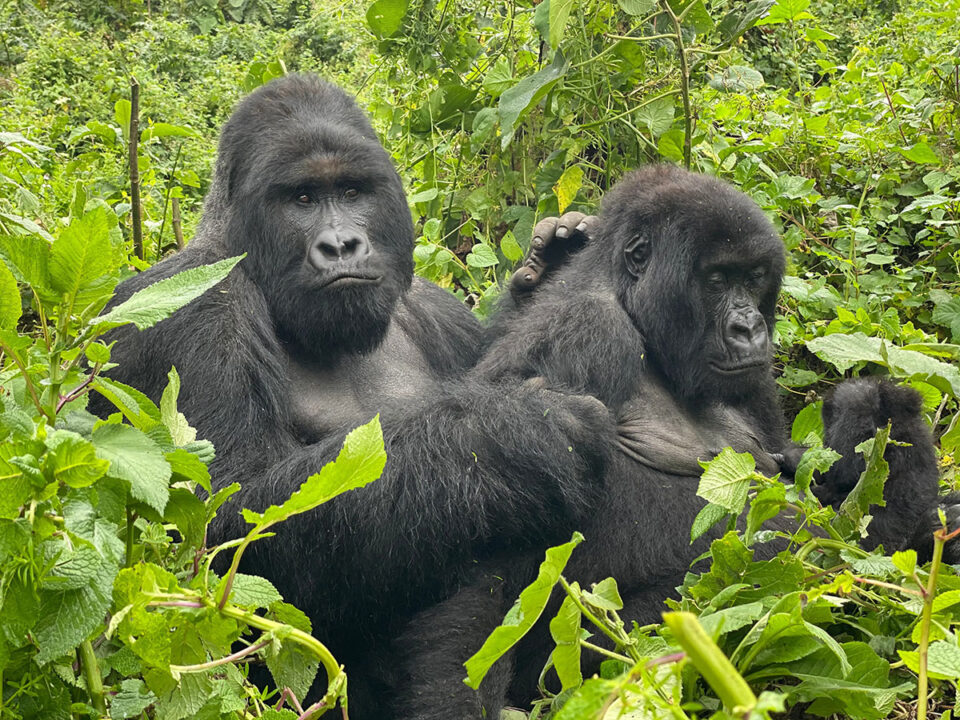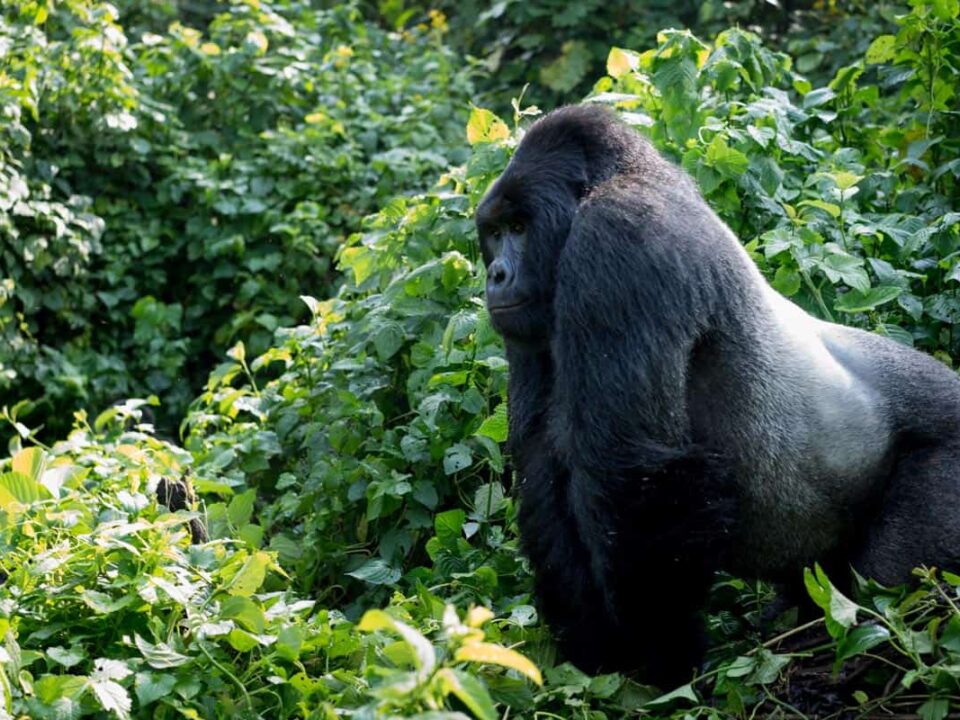17 Reasons Why Mountain Gorillas Can Charge during Gorilla Trekking

Is Chimpanzee Habituation Experience in Uganda Worth The Money?
July 17, 2023
What is Uganda famous for as a Safari Destination in Africa?
July 19, 2023Understanding the 17 Reasons Why Mountain Gorillas Charge During Gorilla Trekking and How to Stay Safe
Embarking on a gorilla trek is a thrilling adventure that ranks high on the bucket lists of wildlife enthusiasts worldwide. Travelers flock to Africa, particularly Uganda and Rwanda, to witness the majestic mountain gorillas in their natural habitat. However, before venturing into Volcanoes National Park or Bwindi Impenetrable National Park for gorilla trekking, concerns about safety and the behavior of mountain gorillas often arise. In this comprehensive guide, we aim to shed light on 17 reasons why these awe-inspiring creatures may charge and how to avoid such incidents.
Understanding the Mountain Gorillas:
Mountain gorillas are renowned for their peaceful nature, earning them the title of the most gentle primates on Earth. They live in family groups led by a dominant silverback, the eldest and strongest male. While occasional fights may occur within a group, the dominant silverback resolves conflicts swiftly, ensuring harmony. However, gorillas can exhibit aggression when they perceive a threat from strangers or when confronted by other silverbacks seeking to challenge their authority and steal females. In such instances, gorillas will issue warnings through vocalizations, branch tearing, and chest thumping, indicating their readiness to defend their family against any intruders.
The Process of Gorilla Habituation:
One of the primary reasons gorilla tourism is possible in Uganda, Rwanda, and the Democratic Republic of Congo is due to the process of habituation. Wild mountain gorillas can be habituated over a period of 2-3 years, during which experts and researchers closely follow and gradually acclimate a selected gorilla family to human presence. This involves consistently gaining their confidence and trust, particularly that of the dominant silverback. Once accepted by the lead silverback, the family becomes accustomed to the presence of humans, paving the way for gorilla trekking. However, it’s important to note that not all mountain gorillas are habituated, and encounters with wild gorillas may result in charging or avoidance behavior.
17 Reasons Why Mountain Gorillas May Charge During Gorilla Trekking:
- Testing Trust: In some gorilla families, a silverback or blackback observes approaching visitors to assess their response. A mock charge allows them to gauge if the visitors are friendly or pose a threat.
- Dominant Silverback’s Protection: The dominant silverback charges when he perceives a serious threat to protect the family. Other silverbacks and blackbacks may join him in defending against intruders such as poachers.
- Unexpected Tourist Movements: Abrupt or unpredictable movements from tourists in the presence of gorillas can startle them and trigger a charge. It’s crucial to maintain calm and composed behavior.
- Bright Colors: Mountain gorillas are accustomed to natural colors in their environment. Wearing bright or vivid clothing, such as yellow, can unsettle them and result in charging. Opt for earth-toned attire to blend in.
- Proximity to Gorillas: Getting too close to individual gorillas, especially without their consent, can be interpreted as a threat to the entire family. Maintaining a safe distance of 7 meters is essential.
- Eye Contact: Direct and prolonged eye contact is considered confrontational in gorilla language. Avoid staring into their eyes to prevent them from feeling challenged or threatened.
- Time Limit: Gorilla trekking permits allow for a maximum of one hour with the gorillas. Exceeding this time can disrupt their routine and potentially trigger aggression.
- Group Size: Large groups of tourists can overwhelm gorilla families. It is recommended to limit the number of visitors to a maximum of 8 people to ensure a harmonious encounter.
- Unhabituated Gorilla Families: Unhabituated gorilla families, not accustomed to human presence, may perceive any encounter as a threat. Extra caution is necessary when encountering such groups.
- Noisy Behavior: Mountain gorillas thrive in a tranquil environment. Loud noises or excessive shouting can agitate them. It’s important to maintain a peaceful atmosphere during gorilla trekking.
- Minor Age Restriction: To ensure adherence to briefing guidelines and regulations, the minimum age for gorilla trekking is set at 15 years. Younger children may not comprehend or follow the necessary instructions.
- Encirclement: Surrounding or blocking the path of gorillas inadvertently communicates aggression. Always allow the gorillas space to move freely and avoid obstructing their movement.
- Camera Flash: Flash photography can startle and disturb gorillas. Avoid using camera flashes and opt for natural lighting conditions to capture photographs during the trek.
- Torchlight Usage: When navigating through dense forests, it may be tempting to use a flashlight for better visibility. However, directing the light directly into the eyes of gorillas can provoke charging or aggressive behavior.
- Bad Day for the Gorilla Family: Like humans, gorillas have good and bad days. They may display aggression if they have experienced conflicts, encounters with hostile gorillas, or if members are injured or ill.
- Solitary Gorillas: A solitary gorilla that has been separated from its family may exhibit hostile behavior, perceiving any encounter as a threat. Caution is advised when approaching solitary gorillas.
- Mother with Offspring: Female gorillas are fiercely protective of their young. Approaching a breastfeeding mother or getting too close to infants may trigger defensive charging.
How to Respond When a Gorilla Charges:
- Remain Calm and Lower Yourself: In the event of a charge, it’s crucial to stay composed and avoid panicking. Lower yourself to demonstrate submission, as gorillas often enjoy a sense of dominance.
- Grooming Gesture: If a gorilla touches or grooms you during a charge, reciprocate the gesture by gently touching or scratching their back. This signals that you mean no harm and are friendly.
- Follow the Guidance of Your Ranger Guide: Trust in the expertise of your ranger guide, who will provide instructions and ensure your safety throughout the trek. They are knowledgeable in gorilla behavior and will intervene if necessary.
Conclusion:
Gorilla trekking offers an extraordinary opportunity to witness the majesty of mountain gorillas in their natural habitat. While charges are rare and often staged, understanding the reasons behind such behavior is essential for a safe and enjoyable experience. By adhering to guidelines, maintaining respect for gorillas’ personal space, and responding appropriately, visitors can minimize the risk of charging incidents. Remember, gorilla trekking is a once-in-a-lifetime experience that allows us to appreciate and protect these magnificent creatures.




